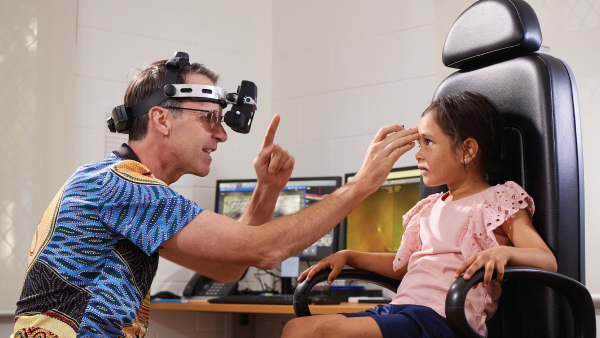You are viewing 1 of your 3 articles before login/registration is required
A Bionic Future?
Will bionic implants eventually reshape the eye surgery landscape?
Once reserved for the imagination of science-fiction writers (remember The Six Million Dollar Man?), bionics – with the prefix “bio” for life, and “nics” shorthand for electronics – refers to mechanical systems that form either part of a living organism, or else seek to function in the same way as a living organism. Bionic implants are now under active development, with some subsets of the technology (for example, cochlear implants and bionic limbs) making their way into the commercial realm. But if we examine this technology in terms of what it could mean for sight loss recovery, the journey towards commercial viability has been problematic.
Indeed, the last few years have already seen one of the major players veer dangerously close to bankruptcy; Second Sight Medical Products, who developed the only FDA-approved bionic eye implants, had to discontinue its retinal implants – the Argus I and second-generation Argus II – in 2019 due to financial difficulties. Disturbingly, this discontinuation left more than 350 blind users with implanted technology that was essentially obsolete. Its stock price rapidly falling, Second Sight’s commercial future looked bleak until February 2022, when the company announced a merger with Nano Precision Medical (NPM), a biopharmaceutical company seeking to prioritize their drug-delivery services over Second Sight’s pre-existing implant technology.
The high costs were always going to limit adoption, making it a risky business model. If we look back at how much the Argus II actually cost for one patient – the device itself was priced between $115,000 to $150,000, with surgery and months- or years-long one-on-one rehabilitation racking up an estimated total of nearly $500,000 per patient.
So, what’s next for bionic eyes?
Before its 2022 merger, Second Sight had begun to divest more and more R&D time into its neural implant, Orion Visual Cortical Prosthesis System – an implant that bypasses the visual processing of the eyes and instead sends an array of electrodes straight to the brain’s visual cortex. This technology is still in clinical trials; it remains to be seen how far NPM will want to push this type of device after Argus II’s financial history, but it does offer some hope of a way of circumnavigating the need for retinal implants.
And companies outside the US are continuing to work on retinal implants. In Paris, for instance, Pixium Vision are currently undergoing feasibility trials for their Prima System, an implant that proposes to offer age-related macular degeneration (AMD) patients bionic vision. And, despite the aforementioned setbacks, the market for retinal implants is still predicted to see a “steady growth rate of 7.5% by 2031.”
The New Optometrist Newsletter
Permission Statement
By opting-in, you agree to receive email communications from The New Optometrist. You will stay up-to-date with optometry content, news, events and sponsors information.
You can view our privacy policy here
Most Popular
Sign up to The New Optometrist Updates
Permission Statement
By opting-in, you agree to receive email communications from The New Optometrist. You will stay up-to-date with optometry content, news, events and sponsors information.
You can view our privacy policy here
Sign up to The New Optometrist Updates
Permission Statement
By opting-in, you agree to receive email communications from The New Optometrist. You will stay up-to-date with optometry content, news, events and sponsors information.
You can view our privacy policy here







